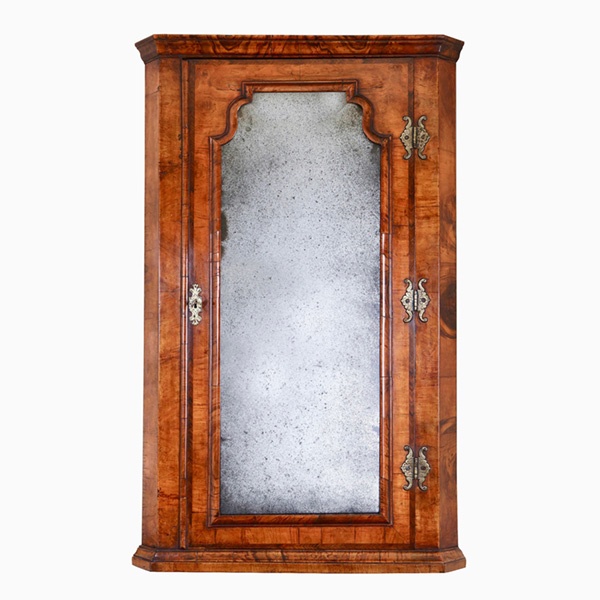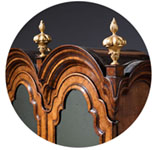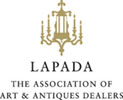18th Century George III Chippendale Period Mahogany Linen Press Wardrobe
Sold
Follow Us
18th Century George III Chippendale Period Mahogany Linen Press Wardrobe
A fine George III mahogany linen press in outstanding original condition. The press was obviously made to exceed with the cabinetmaker using only the very finest materials in an extravagant manner. An example of this extravagance can be seen on every angle off the piece, you open a drawer and you are greeted with solid mahogany linings, the cupboard doors display the finest cuts of mahogany, veneered onto mahogany, even the backboards are of solid mahogany in a panelled construction.
Traditionally, a ”linen press” (or just press) is a cabinet, usually of woods such as oak, walnut or mahogany and designed for storing sheets, clothing, and other textiles. Linen-presses were made chiefly in the 17th, 18th, and 19th centuries and are now considered decorative examples of antique furniture. Examples made during the 18th century often featured expensive veneers and intricate inlays, and were designed to occupy prominent places in early bedrooms as storage for clothing. Examples from the 18th century are most highly prised due to superior cabinet-work, classic design and exquisite use of materials.
Condition
Good. Wear consistent with age and use.Dimensions
Height: 190 cm (74.81 in) Width: 128 cm (50.4 in) Depth: 61 cm (24.02 in)PREVIOUSLY SOLD
No Results Found
The page you requested could not be found. Try refining your search, or use the navigation above to locate the post.
No Results Found
The page you requested could not be found. Try refining your search, or use the navigation above to locate the post.
YOU MAY ALSO LIKE

Queen Anne Walnut Corner Cupboard with Bevelled Mirror Plate
A truly remarkable find in original condition. To the door a shaped soft bevelled mirror plate is framed by a cross-grain molding of typical queen Anne design which is further cross-banded, feather-banded and edged to the opening with a single de-molding.

Queen Anne Walnut Corner Cupboard with Bevelled Mirror Plate
A truly remarkable find in original condition. To the door a shaped soft bevelled mirror plate is framed by a cross-grain molding of typical queen Anne design which is further cross-banded, feather-banded and edged to the opening with a single de-molding.







